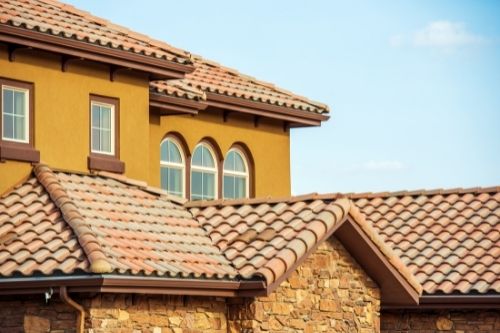The vast majority of homeowners barely consider their roofs at all. It’s what protects the house from the sun and rain and as long as it does that job well, who cares, right? In fact, the top of your roof is a lot more complicated than you might think even if you’ve been up there a few times. When a professional does a roof inspection, they have a lot more ground to cover than simply taking a look around. To effectively inspect a roof, you need to take the health of the shingles, the structure beneath the roof, every vent and sunroof and the flashing around them. There are overt signs of damage and more subtle signs of potential future problems. They even need to assess how your yard is arranged in case there’s a tree or power line that might need to be taken into account.
The best way to understand the importance of a roof inspection is to understand the inspection checklist itself. This will help you to know why a trained professional is needed for the twice-yearly inspection and what shuold be able to tell you about your roof when the inspection is over.
Damaged Shingles
Singles, Shake, or Tiles are the primary material of your roof and so it’s easy to understand why the inspection starts here. Your inspector needs to look for a large number of damage types over the entire surface area of the roof. Blistering, curling and splitting can be an environmental problem while cracked, broken, and loose shingles are often the result of extreme weather or falling branches. Soft shingles are also a problem because they indicate dangerous decay stages.
Loose Nails
Singles are nailed down and sealed. If the seals or nails come loose, this can cause a loose shingle and compromise the integrity of your roof.
Shingles and Sagging on the Ridges
The ridges of your roof are the areas most at risk of damage and holes eventually forming. The inspector will look for broken or loose shingles on the ridges and signs of sagging.
Damaged Flashing
The flashing is what seals things like chimneys, windows, and vents to your roof and is usually a metal sheathing caulked to the roof and the object. Flashing can rust, warp, corrode, or get incredibly dented and the caulk can also rot or break away. These will all put your home at serious risk of leaks and infestation.
Gutters and Downspouts
All the features that connect to your roof are part of both roof safety and your inspection. The gutters and downspouts are there to direct water that hits your house away from the walls which could begin to rot if over-exposed to water.
Shingle Overhangs
There are many kinds of roof design and some angles have shingle overhangs rather than a directly attached gutter. These need to be checked on to ensure they will continue to properly direct water down and away from the home.
Cracks on Roof Sheathing
The roof sheathing is what’s between the rafters and the actual shingles. It’s often made of a lightweight wood or composite board like plywood but is an integral part of your roof structure. After the exterior inspection, your inspector will head into the attic to check on the internal features.
Attic Ventilation
The ventilation in your attic matters a surprising amount to the health of your roof and is part of it’s design to keep your house comfortable and safe.
Leaks and Light
Inspections during the day allow for detection of potentially serious leak issues. If you can see light coming through the roof in your attic, it’s time for repairs.
Exhaust Fans
Finally, exhaust fans usually go through the attic to the roof and should be properly sealed at every stage. Your roof inspector will usually take a look at these connections inside and outside to ensure they’re installed correctly and don’t need repairs.
Given how important the roof is to your home, it makes sense for the inspections to be quite complex and the basic checklist doesn’t even include specialty items like skylights and satellite dishes. For more information about roof inspections or to schedule one for your home or business, contact us today!


